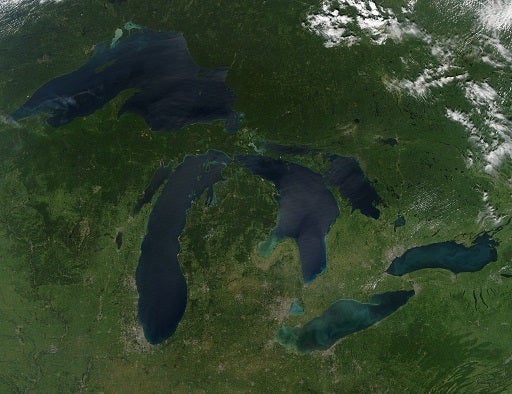
The Great Lakes Range at U-M
Our Mission

Our mission is to explore the cultural landscape of the Great Lakes region and the complex history of Lake Huron, from prehistoric hunter-gatherers that lived in the area since at least about 13,000 years ago, to early 20th century shipwrecks.
The first responsibility of the Great Lakes Range at UM is the acquisition and long-term curation of archaeological information from the Great Lakes region. Beyond its curatorial functions, the Great Lakes Range is a dynamic locus of research, teaching and public outreach.
The Great Lakes Range is an active site for student research at both the graduate and under-graduate level to learn about methods for underwater research, and the archaeology of the the region. The direct, ‘hands on’ character of student training in the lab provides a valuable complement to formal classroom teaching. Range collections are used formally in student research and dissertation projects, and for demonstrations in a variety of classes on campus. In addition, many undergraduate students receive hands on training in archaeological laboratory techniques via work-study appointments and as volunteers on lab and field projects. Students in undergraduate courses in anthropology are particularly encouraged to volunteer in the museum to get a feel for the profession ‘in practice’ and as a way of becoming more involved in the research community that centers on the museum.
A Bit of History About the Range
Great Lakes is one of the four founding ranges of the Museum of Anthropology. The Great Lakes range is responsible for the museum’s archaeological holdings from Michigan, the surrounding Great Lakes states and Canada.
The first curator of the Great Lakes Range was Dr. Wilbert Hinsdale, the pre-eminent authority on Michigan archaeology in the early part of the twentieth century. His extensive correspondence and personal collections formed the beginning of the Great Lakes holdings. Emerson Greenman followed him as curator, and during his more than twenty years of activity excavated many of the most significant archaeological sites within the region. Subsequent curators included James Fitting and Christopher Peebles. John O’Shea has been curator of the Range since 1982.
Our News
- Watch our underwater video!
 Watch our underwater video on the Archaeology Below Lake Huron Youtube channel about lifting a sample bag from 130… Continue reading Watch our underwater video!
Watch our underwater video on the Archaeology Below Lake Huron Youtube channel about lifting a sample bag from 130… Continue reading Watch our underwater video! - Video on 3D modelingWatch this video about the 3D modeling of Great Lakes Fluted points!
Learn more by visiting our facebook pages and YouTube channel!
Contact
John O’Shea



